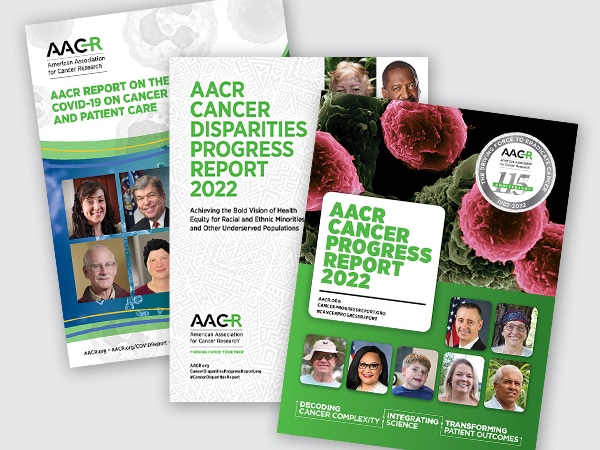AACR Grantee Identifies Novel Combination Therapy for Epithelial Ovarian Cancer
Epithelial ovarian cancer is by far the most common ovarian cancer subtype, accounting for 90 percent of ovarian cancers. The complex genetic heterogeneity of this disease makes treatment particularly difficult. While the introduction of PARP inhibitors to treat ovarian cancers has been a major advancement, only the approximately 50 percent of epithelial ovarian cancers that exhibit defective DNA repair via homologous recombination (HR) are potentially responsive to PARP inhibition. Moreover, the development of therapeutic resistance remains a challenge.
AACR grantee Sergey Karakashev, PhD, and colleagues at the Wistar Institute have recently shown that the efficacy of PARP inhibitors can be extended to HR-proficient epithelial ovarian cancers using a combinatorial approach with inhibitors of the histone-modifying enzyme EZH2.

More specifically, EZH2 inhibition appears to sensitize HR-proficient epithelial ovarian cancers that present with the overexpression of the oncogene CARM1 to PARP inhibition by upregulating non-homologous end-joining (NHEJ), an error-prone type of DNA break repair. “Multiple genes inactivated by EZH2 in CARM1-expressing cells, such as MAD2L2, are involved in NHEJ,” explains Karakashev, “so I hypothesized that EZH2 inhibition by a small molecule inhibitor like tazemetostat can restore the expression of NHEJ-related genes and promote sensitivity to PARP inhibitors.”
Testing in ovarian cancer cell lines and in vivo models confirmed Karakashev’s supposition. Use of the inhibitors together led to chromosomal abnormalities and, eventually, cell death. These results, published in Cancer Cell, represent an exciting development in ovarian cancer research, with the potential for real clinical impact.
Combining EZH2 and PARP inhibitors is a feasible novel therapeutic strategy for epithelial ovarian cancers and could also be used to treat other cancers in which CARM1 is overexpressed. And because both PARP and EZH2 inhibitors are already approved by the U.S. Food and Drug Administration, this new approach is readily translatable to the clinic, where these inhibitors can be repurposed based on CARM1 expression status.
“My AACR-AstraZeneca Ovarian Cancer Research Fellowship was essential for performing this work,” Karakashev says, “allowing me to complete the extensive animal studies that are necessary for translational cancer research.” Karakashev’s fruitful study and publication illustrate the impact funding provided by the AACR Research Grants Program can have not only for our individual grantees, but also for the general advancement of cancer research and, in the end, for cancer patients.



